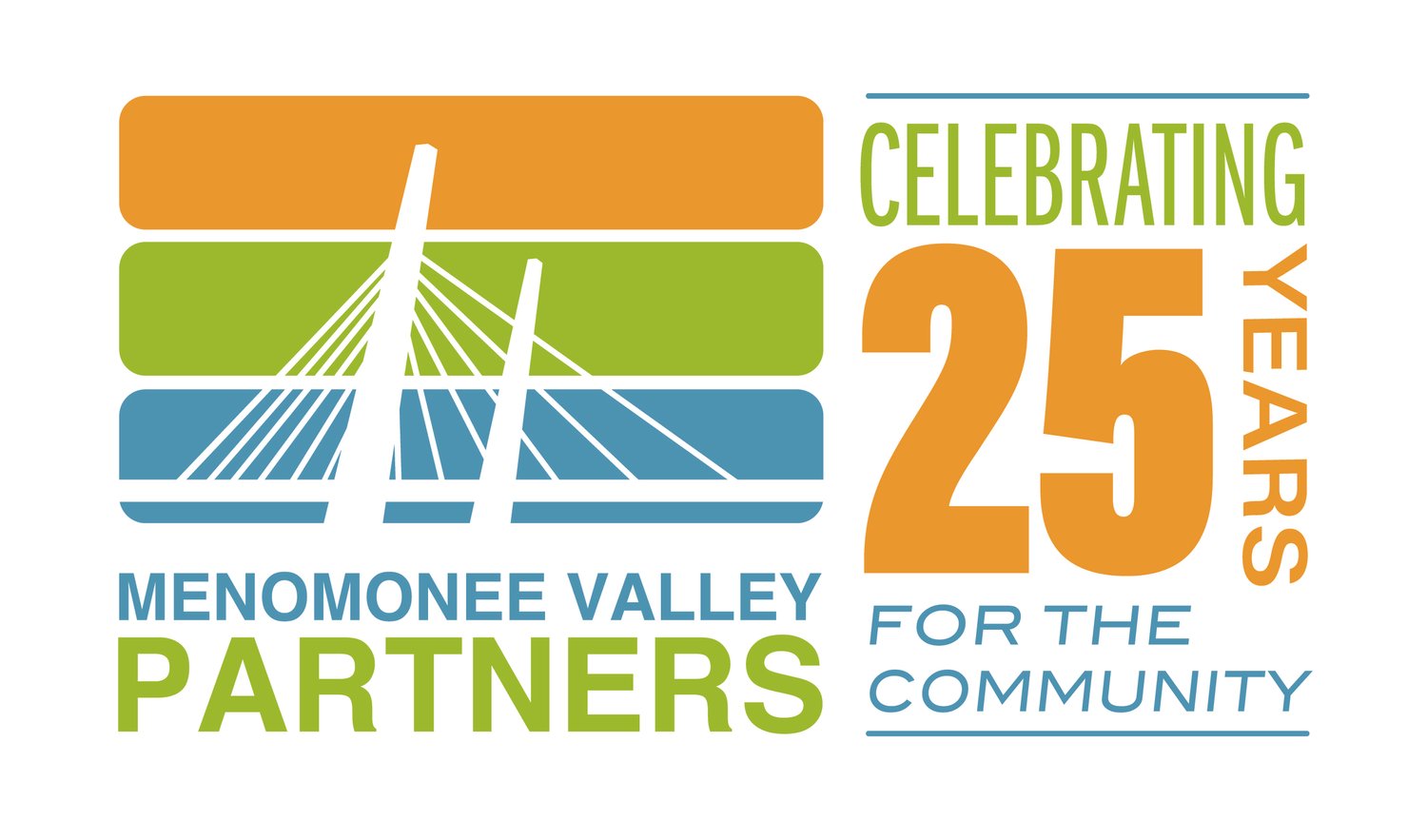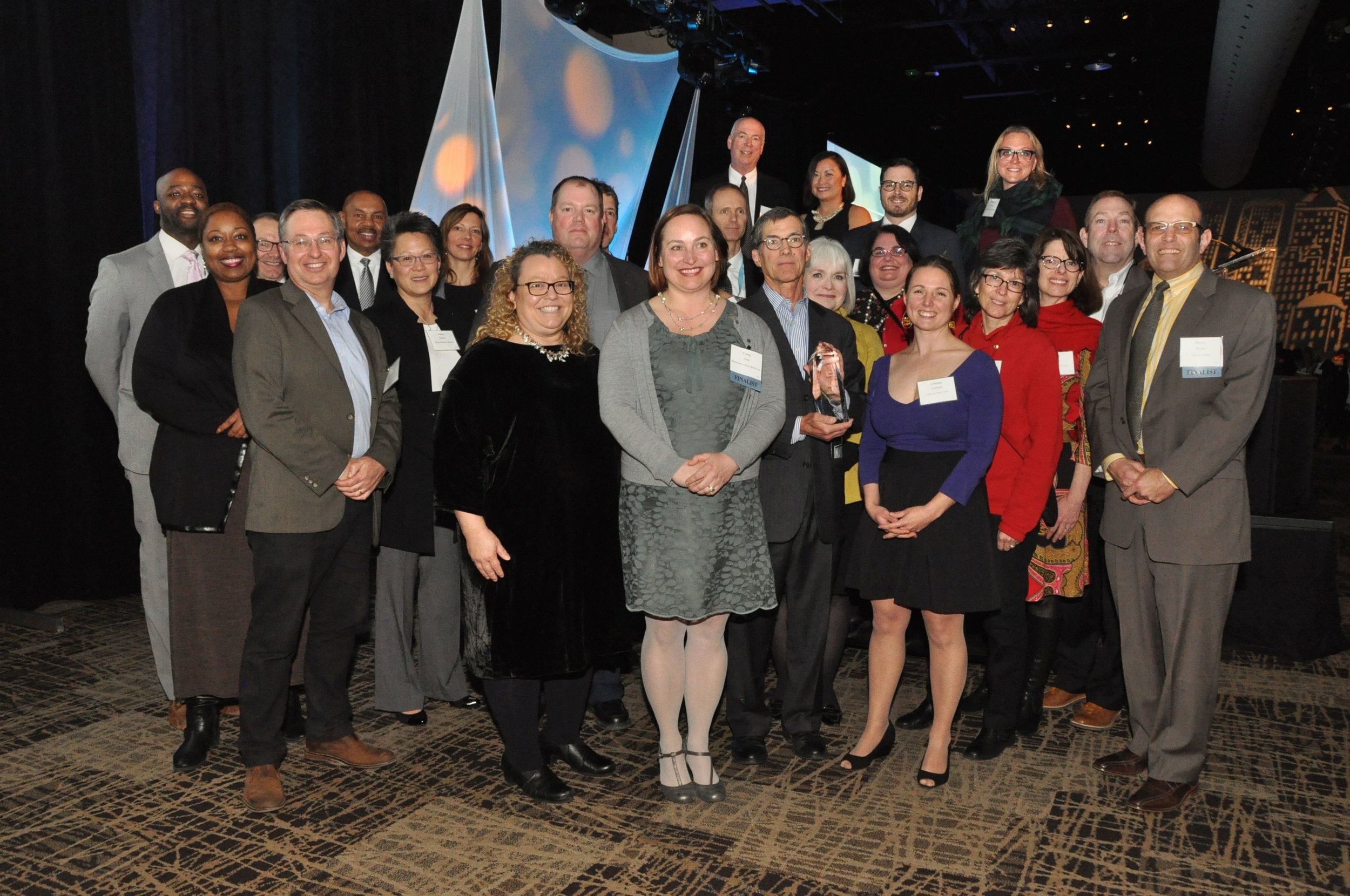
NEWS FROM THE VALLEY
Menomonee Valley's story unfolds in the 2017 annual report
The Valley's story would not be possible without the many partners, funders, and volunteers for your critical role in writing the Valley's story.
As the Menomonee Valley’s story unfolds, it becomes intertwined with so many others: businesses looking for a home, residents looking for family-supporting career opportunities, and people making memories at Valley destinations and its many green spaces and trails.
Seven new businesses called the Valley home in 2017, Potawatomi Hotel & Casino announced an $80 million expansion, more than 200 students were introduced to promising careers close to their schools and homes, and more than 600 people explored during the first ever Valley Week.
As businesses open their doors here and people secure family-sustaining jobs, the Valley becomes part of their stories. Those same people help to write the Valley’s story by caring for the Valley’s parks and trails and helping the broader community and visitors discover all the Valley has to offer.
The Menomonee Valley’s rebirth and revitalization is a story that continues to unfold, a story that simply wouldn’t be possible without the many partners, funders, and volunteers for your critical role in writing the Valley’s story and subsequently touching the stories of all those who interact with it.
This year’s annual report is organized by the Valley’s strategic priorities to demonstrate the progress toward each. We look forward to seeing where the next chapter takes us!
Take a look at the 2017 Annual Report: The Story Unfolds and let us know what you think by emailing Info@RenewTheValley.org. We're also happy to send you a hard copy.
Vision unveiled for 40 acres of land in the Menomonee Valley
Design charette concepts revealed for six key sites
Menomonee Valley Partners, the City of Milwaukee, and UWM’s School of Architecture and Urban Planning’s Community Design Solutions revealed a vision to transform more than 40 acres of land remaining in the heart of the Menomonee Valley during an event today at Potawatomi Hotel & Casino. Design concepts are the culmination of the Menomonee Valley Design Charette and lay out a vision for sustainable development on five vacant or underutilized riverfront sites as well as streetscaping for the St. Paul Avenue corridor. Concepts highlight potential for the next phase of Menomonee Valley revitalization, including new businesses, an extension of the RiverWalk along the Menomonee River, and physical connections to adjacent neighborhoods.
“The two most important factors in the transformation of the Menomonee Valley have been vision and collaboration. That is why I have been enthusiastic about the forward-looking design work that so many stakeholders have contributed to,” said Mayor Barrett.
The Menomonee Valley Design Charette, held January 31, 2018, was a full day public planning session with six local architecture firms matched to each of the sites. Using the Valley 2.0 Plan, extensive research, and focus group discussions, the firms created innovative design concepts for high-quality, sustainable, job creating development.
“These designs show the next generation of development in the Menomonee Valley, development that will bring jobs, activate the Menomonee River, and restore the environment,” said Rocky Marcoux, Commissioner of the Milwaukee Department of City Development. “What the Menomonee Valley has become, given its history, is nothing short of extraordinary. However, these design concepts suggest that the best days of the Valley are still ahead of it.”
“With the Menomonee Valley Industrial Center as our precedent, we believe the development of these sites could generate up to 800 jobs as well as transform the Menomonee River into a new front door to the Valley,” said Corey Zetts, Executive Director of Menomonee Valley Partners. “The firms who worked on the charette succeeded in demonstrating the potential of strong design to connect people to jobs, to nature, and to each other.”
Valley revitalization wins MANDI Award
The Valley was one of two finalists for the Chase Economic Development Award, a new category this year. The Milwaukee Awards for Neighborhood Development Innovation (MANDIs), presented by LISC Milwaukee and U.S. Bank, celebrate the “good news” of successful efforts to revitalize neighborhoods and strengthen the community.
From public nominations, a volunteer Selection Committee named 12 finalists in December, and winners were announced March 15 to an audience of 780 community leaders at Potawatomi Hotel & Casino.
Surrounded by 11 other inspiring projects and people, the Menomonee Valley was the first recipient of a new award, the Chase Economic Development Award, which recognizes outstanding projects that drive economic growth at the neighborhood level.
Once an eyesore, the Valley has been transformed, becoming a national model in economic development and environmental sustainability.
The Valley’s revitalization over the last 18 years – 300 acres of revitalized brownfields, 47 new businesses, 5,000+ family-supporting jobs, 60 acres of parks and trails, 1 million square feet of sustainable development – is the result of so many in the community who have worked together to support this transformation – thank you for your role!
View a video produced by LISC for the awards:
Congratulations to all the finalists, all of whom are doing important work in our community! It is inspiring to see people and organizations working to make the Milwaukee we all envision it to be.
Read more about the event and awards here:
- MANDIs Announces 2018 Winners for Improving Milwaukee Neighborhoods (Urban Milwaukee), 3.16.18
- Scenes from the MANDI awards, which honored Pete's Fruit Market, Menomonee Valley redevelopment (Milwaukee Business Journal), 3.16.18
- MANDI award winners announced (BizTimes), 3.16.18
St. Paul Ave listed on National Register of Historic Places
The West St. Paul Avenue Industrial Historic District, in Milwaukee’s Menomonee Valley, is now listed on both the State Register of Historic Places and the National Register of Historic Places. This district consists of 22 industrial buildings along 10 blocks between 11th and 21st streets. Each of the contributing properties is now eligible for historic tax credits for up to 40% of the building's renovation costs (20% at the state level and 20% at the federal level), which help offset costs associated with restoring historic buildings.
The West St. Paul Avenue Industrial Historic District represents a period of industrial growth and prominence of the Menomonee Valley from the 1880s to the 1950s. The district was built by booming manufacturing businesses that produced a wide range of products, including tin ware, wood products, heating supplies, and electronic controls. Some well-known manufacturers who built their legacy on the street include Cutler-Hammer, National Enamel and Stamping Company (NESCO), and Geuder, Paeschke & Frey. The district will now be recommended for listing on the National Register of Historic Places, which is expected by the end of January.
Menomonee Valley Partners, a nonprofit organization working to revitalize the Menomonee Valley, coordinated the district’s nomination to encourage investment along the street. The West St. Paul Avenue corridor was highlighted for its catalytic potential in the Valley 2.0 Plan, a strategic plan for the continued revitalization of the Valley, adopted by the City of Milwaukee in 2015.
“The historic district listing is an exciting part of building St. Paul Avenue’s identity and positioning the corridor for further redevelopment,” said Corey Zetts, Executive Director of Menomonee Valley Partners. In the last 15 months, four new businesses have moved to the street’s historic industrial buildings and three buildings are currently being restored, soon to become home to three additional businesses.
Read more on the St. Paul Ave Design Showroom District and see which properties are available.
St. Paul Ave is in the news at:
St. Paul Avenue declared historic district, more development on the way (Milwaukee Business Journal), 12.13.17
West St. Paul Avenue added to state register of historic places (BizTimes), 12.14.17
West St. Paul Avenue Listed on State Register of Historic Places (UrbanMilwaukee), 12.13.17
West St. Paul Avenue listed on State Register of Historic Places (OnMilwaukee), 12.13.17
Menomonee Valley district added to State Register of Historic Places (WTMJ4), 12.14.17







